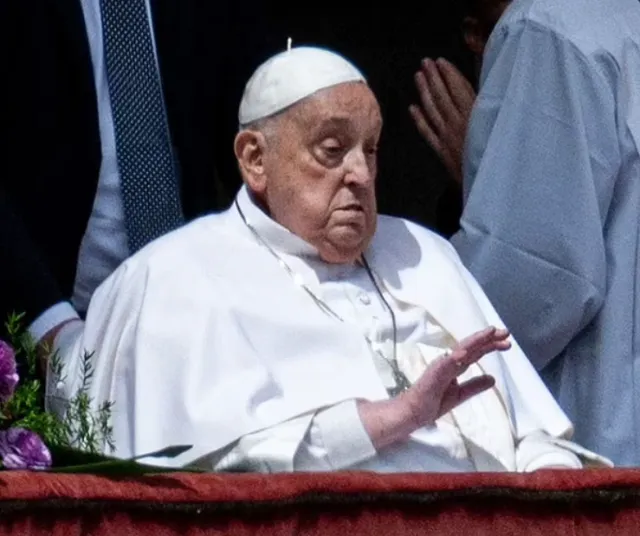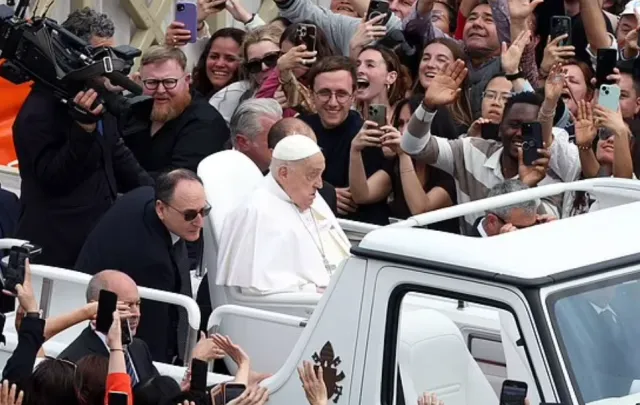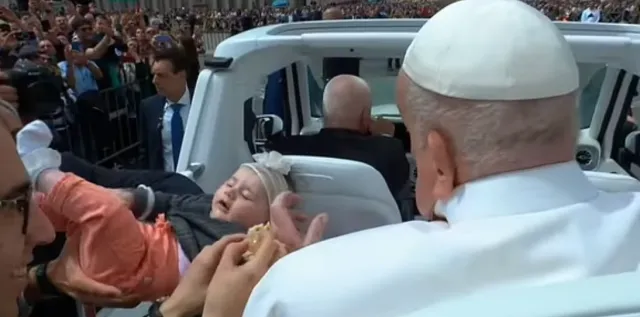The passing of Pope Francis at the age of 88 marks the end of a transformative era for the Catholic Church, leaving behind a legacy of compassion, reform, and questions about who will carry his mission forward.
Pope Francis’ final morning and cause of death
Pope Francis died at 7:35 a.m. this morning at the Saint Martha residence in Vatican City. He passed peacefully, just 90 minutes after waking up.
According to Corriere della Sera, the Pope’s alarm went off at 6 a.m. He felt unwell shortly after and passed from a stroke by 7:35 a.m.
Doctors confirmed the cause of death as a cerebral stroke, followed by irreversible heart failure. The Vatican released his official death certificate shortly after.
Dr. Andrea Arcangeli, Director of the Vatican Health and Hygiene Directorate, noted that Francis had pre-existing conditions. These included double pneumonia, high blood pressure, Type II diabetes, and multiple bronchiectases.
His death was confirmed using electrocardiographic thanatography. The official announcement came nearly 12 hours later.

A final act of devotion to the faithful
Just a day before his death, Pope Francis made what would be his final public appearance. He greeted thousands in St. Peter’s Square on Easter Sunday.
Surprisingly, he was not wearing his nasal oxygen cannula. He had used it in many recent appearances since his hospitalization.
The Pope spent nearly 50 minutes in 21°C heat, riding through the crowd of 35,000. This was despite doctors’ orders to rest and reduce his schedule.
Earlier that day, Francis appeared on the Vatican balcony. He greeted the crowd with “Brothers and sisters, Happy Easter” before his aide continued the annual Urbi et Orbi blessing. In it, he called for peace in Ukraine and Gaza.
This final act reflected his lifelong commitment to pastoral duty, even in frail health.

Pope Francis and the battle for the church’s future
The passing of Pope Francis has triggered a quiet but powerful shift within the Catholic Church. As the 266th Pontiff, he led since March 2013 and became a symbol of reform and inclusion.
He broke from the traditional conservatism of his predecessors, John Paul II and Benedict XVI. His papacy was marked by support for LGBTQ+ rights, care for migrants, and urgency on climate change.
During his time as Pope, Francis shaped the group that will elect his successor. Around 80% of the 138 voting-eligible Cardinals were appointed by him. This increases the chances that the next Pope will follow a similar liberal path.
However, the conclave process is highly political and unpredictable. While liberal and conservative factions exist, there are no unified blocs. Many cardinals come from countries with vastly different views on issues like gender and sexuality.
Personalities and relationships will also influence the choice.

Who could succeed Pope Francis?
Several names have already emerged as frontrunners. One is Peter Turkson, former Bishop of Cape Coast, Ghana. If elected, he would be the first Black Pope.
Another contender is Luis Antonio Tagle, the former Archbishop of Manila. He is popular in betting markets and hails from Asia, where the Catholic population is growing rapidly.
Tagle is considered moderate-to-liberal. He opposes abortion rights but advocates for more compassionate treatment of gay and divorced Catholics. He has criticized the Church’s harsh approach, saying it has driven people away from faith.
The College of Cardinals will officially meet in Rome soon. Only cardinals under age 80 may vote in the conclave. Of 252 living cardinals, 138 are eligible.
The vote will not occur for at least 15 days. A nine-day mourning period must take place first. In the meantime, Cardinal Kevin Farrell, the Camerlengo, assumes limited administrative control of the Church.

Pope Francis’ health battles in his final months
Pope Francis had been discharged from hospital just weeks earlier, following a 38-day stay. He had been suffering from double pneumonia and other complications.
His doctors had recommended two months of full rest. Yet, he insisted on continuing his duties.
In September 2024, he embarked on a 12-day tour of Southeast Asia and Oceania. He visited Indonesia, Papua New Guinea, and Singapore, despite declining health.
While hospitalized, Francis experienced two critical episodes. His doctors later revealed that his life had been in danger during those moments.
Even after discharge, he made surprise appearances at Mass and in St. Peter’s Basilica. These moments gave many hope that his condition was improving.
In the last week of his life, he appeared twice in public without his oxygen aid. One of those moments included a short Easter Sunday meeting with U.S. Vice President J.D. Vance.
Although they had clashed on immigration policy in the past, their meeting was cordial. The Pope gave Easter gifts—three chocolate eggs—for Vance’s children.
This gesture reinforced Francis’ ongoing commitment to compassion and dialogue, even in frailty.
Global tributes and postponed canonization
The Vatican announced that Carlo Acutis’ canonization, scheduled for April 27, would be postponed. Acutis, dubbed “God’s Influencer,” was set to become the first millennial saint.
Carlo was born in London in 1991 and raised in Milan. He used technology to share his faith until his death from leukemia in 2006 at age 15.
Italian Prime Minister Giorgia Meloni said she was “deeply saddened” by Francis’ passing. She recalled his wisdom, friendship, and the comfort he gave her during difficult times.
King Charles released a heartfelt message. He praised Pope Francis for his compassion and tireless work for people and the planet. He also noted that he and Queen Camilla were deeply moved during their recent visit with the Pope.
A legacy of compassion and change
Pope Francis will be remembered for his humility, courage, and reformative spirit. He reached out to those on the margins and challenged the Church to evolve.
Though his physical presence is gone, his influence on the Catholic Church will endure—especially through the cardinals he chose and the principles he championed.
The world now awaits his successor. But the legacy of Pope Francis has already left an indelible mark on history.